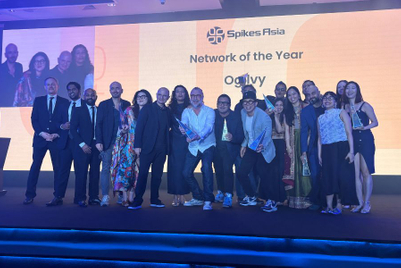
| PARTNER CONTENT |
More than ever, brands need to walk their talk, which requires purpose-led action from the inside out. “We need to see purpose as core to everything we’re doing and not just used as a marketing initiative,” says Rebecca Wilson, executive vice president, Singapore & Australia, WE Communications. “Employees, customers and shareholders want it, and so leaders must lead with purpose.”
According to research from WE & Quartz Insights, leaders themselves acknowledge this trend. The study found that 77% of leaders agree that brands have a moral obligation to engage with a societal issue when it impacts their business.
The power of purpose is clearly evident, but you have to get it right internally first for it to be embraced and effective outside an organisation. Employees can be the biggest advocates and loudest cheerleaders – if they feel actively engaged with what their company stands for and how they can intersect with that purpose. After all, if your employees do not believe your company is not living its values, you can hardly expect anybody else to believe.
For many companies, COVID-19 has presented a litmus test for authenticity in purpose – for organisations to truly demonstrate their purpose beyond just a set of values and initiatives.
“We work with so many governments, corporates, and NGOs around the world and the meaning of our purpose has changed recently. All of our employees are working to help our clients solve problems that no one’s ever encountered before,” says Stephanie McConachy, head of marketing & communications, PwC Singapore.
It's a similar story for countless other companies across Asia Pacific, who, by taking swift action to respond to the pandemic, have also found themselves genuinely living their purpose.
Purpose as an impact driver
Brand purpose is the core belief that drives an organisation – it's the powerful connective tissue between employees, customers and communities that guides decisions on how a business functions. Purpose affects every aspect of business, impacting an organisation’s communication strategy, how it manages its core business, and how it engages and retains employees. Because it provides direction and informs your strategy, it must be rooted in truth and authenticity. “In fact, purpose is both the 'why' and the 'how' of an organisation,” says Wilson. “How an organisation conducts itself and embodies its reason for existing – or its 'why' – is what differentiates those that do it exceptionally well from those that struggle."
At a time when brand relevancy is being questioned more than ever, it's vital for organisations to have purpose at the core of everything they do, says Siew Ting Foo, chief marketing officer at HP Inc. "Companies are successful when purpose is connected to their growth strategy; where purpose is at the heart of their company culture, employee engagement, and brand reputation."
In addition to aligning purpose to the organisation’s core values, purpose is also powerful when it's connected to the brand’s origin story. This is the case for technology company Intel, whose purpose is to "create world-changing technology that enriches the lives of every person on earth."
"This is something we have worked with over the last 50 years with every new CMO, but it has remained the core mission for Intel," says Ajay Mohan, marketing director, Asia Pacific & Japan, Intel. "Different people come up with ideas of how to interpret our purpose, but we always anchor back to that core mission."
The more you can embed purpose into how your company operates, the more impact it can deliver for your business. "More than ever, brands need to connect the dots and identify the intersection points between their purpose and business values to their stakeholders’ values to bring purpose to life," says Alicia Eu, head of corporate, Singapore, WE Communications. "When you start to think of embracing your purpose in those terms, it becomes easier to evolve what you want to do from a purpose standpoint because you are always linking it back to those core values.”
The role of employees – advocacy from within
Before brands can credibly build a platform to talk about their values externally - or have a stance on larger social issues - they must first live their values internally. ‘Purpose-washing’ can have a hugely detrimental impact to a company. If brands state a purpose solely for customers’ benefit and fail to apply the commitment internally, the hypocrisy undermines the organisation’s credibility and trust.
"Employees can be good ambassadors for company purpose," says Colin D'Silva, vice president of corporate affairs/government relations at Cargill. “If you get that [employee advocacy] right, then it is easy to bring that [the purpose] to life with your external stakeholders. You will see everyone in that company walking the talk, and it is easy to get whoever you are dealing with to understand that the company’s purpose is ingrained in everything that the company is doing."
Belinda Tan, head of group communications, sustainability and brand, AP/ EEMEA, at DHL, agrees that employee buy-in to the company’s purpose is vital. Tan says DHL achieves this through employee engagement and corporate responsibility programmes, like its disaster response programme.
"In the event of a disaster, our people go in to take over airport operations and help with all the relief aid that is coming in. These people have day jobs, but regardless of their rank or how senior they are, when they are in a deployment, everyone is the same. That gives our employees a very real sense of what we are doing in terms of purpose," says Tan.
Interpretation – specific, but flexible
An organisation’s purpose should be flexible enough that it can be localised to specific markets. Sanjeev Kapur, chief marketing officer Asia, MetLife, says, "At Metlife, we talk about 'building a confident future with you.’ While our brand purpose remains the same, how we activate it across markets like Japan, Korea and China has to vary for it to be human and compelling for that audience, whether that’s internal or external."
For one of Kimberly Clark’s feminine care brand products, Kotex, the freedom to interpret and localise its purpose is valuable. The brand’s purpose, “championing her progress,” means different things to women in different countries and can adapt while remaining true to the purpose’s essence.
"A starting point has to be a purpose which gives you a tent that is big enough for different markets to articulate in relevant ways for them,” says Rahul Asthana, senior director, India Business transformation at Kimberly Clark.
The future of purpose within organisations
Internal communications is a cornerstone of a successful purpose-led strategy and should be at the forefront of leaders’ minds for 2021. Eva Sogbanmu, head of communications, Asia Pacific, JLL, says that “thinking about ways to connect with our internal people – finding the channels that are effective to reach them" has been a major focus over the past year. "Our immediate goal is making sure that our workforce understands our purpose and can get behind it internally because those are the folks that are working with our clients every day."
Looking ahead, the next frontier for communicating purpose may be how to tailor to an audience of one. Rather than tailoring a purpose for a country, culture or specific market, brands should look to customise and activate their purpose to the individual. MetLife Asia is leveraging digital to put this into action.
"We are now well and truly into the digital communications era where the lion’s share, if not the complete share, has moved to digital," says Kapur. "What digital does is allow you to activate purpose for an audience of one, whereby your engagement, activation and bringing your purpose is customised.”
It is also important to look beyond vanity metrics like potential reach, share of voice and likes or followers, which, although they might look impressive, are often unreliable. Instead, focus on behavioural impact – what behavioural changes you are affecting or how much social change occurred – as far more reliable indicators of impact.
"At inception, any campaign or communications programme needs to consider the behavioural changes you want to see to benchmark and track meaningful change,” says Eu. “At times, we [as communicators] end up working in a silo and focusing more on a share of voice rather than how this product or service positively impacted X number of people, which is the real impact."
The seismic shift to digital propelled by the pandemic, articulating purpose for an audience of one and customising that purpose for the individual look set to be where dividends lie for brands leading with purpose. For brands looking for where to start, purpose must be embedded internally, in your company culture and lived by your employees before it can authentically drive impact externally.
"Purpose is less about what you say and more about what you do," says Asthana. "That’s why purpose is a long game. You can’t say you want to make the world a better place and not do anything about it. The proof point is always in what you do about it."


.jpg&h=334&w=500&q=100&v=20250320&c=1)

+(1).jpg&h=334&w=500&q=100&v=20250320&c=1)
.jpg&h=334&w=500&q=100&v=20250320&c=1)

.jpg&h=334&w=500&q=100&v=20250320&c=1)

.jpeg&h=334&w=500&q=100&v=20250320&c=1)
.jpg&h=334&w=500&q=100&v=20250320&c=1)








